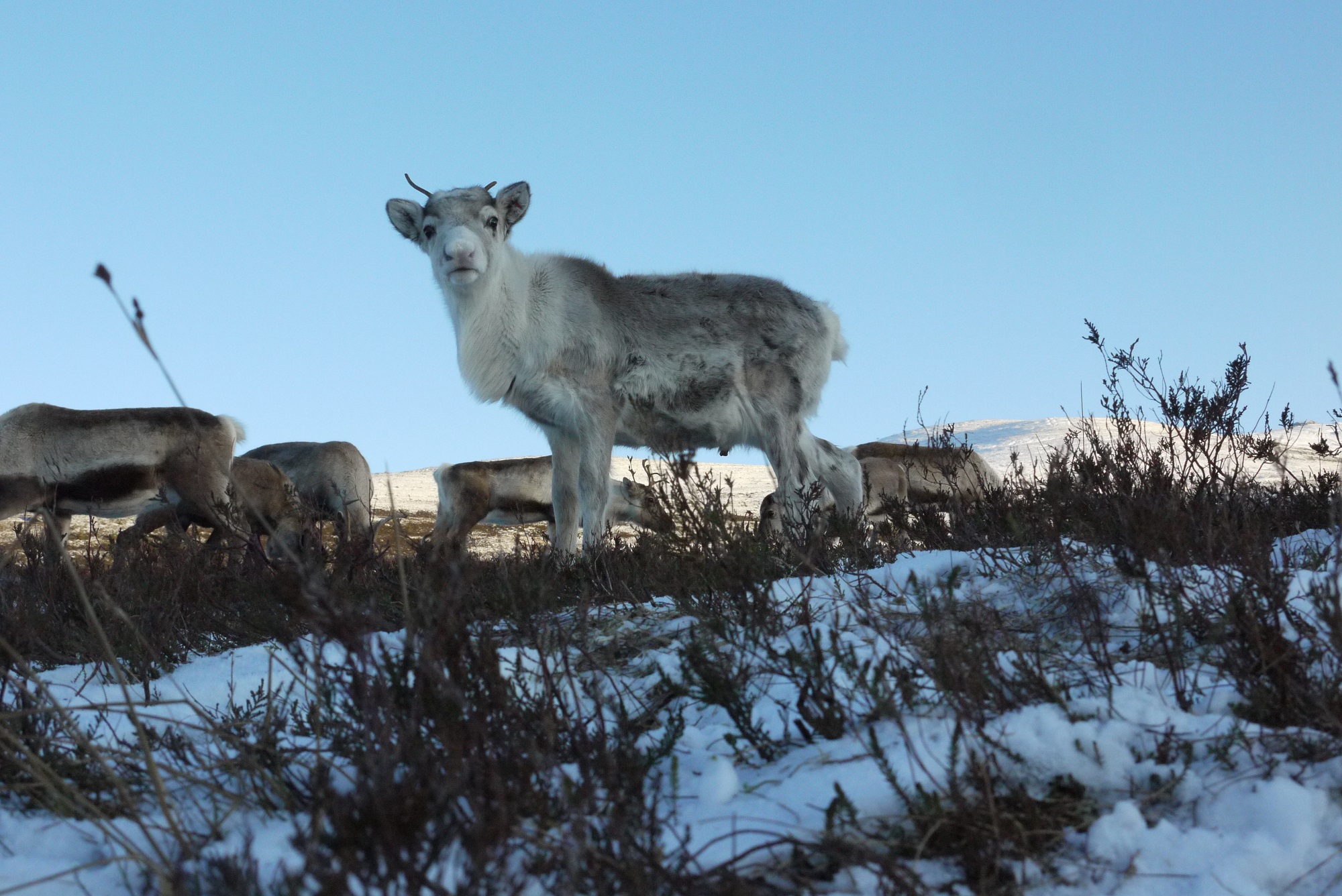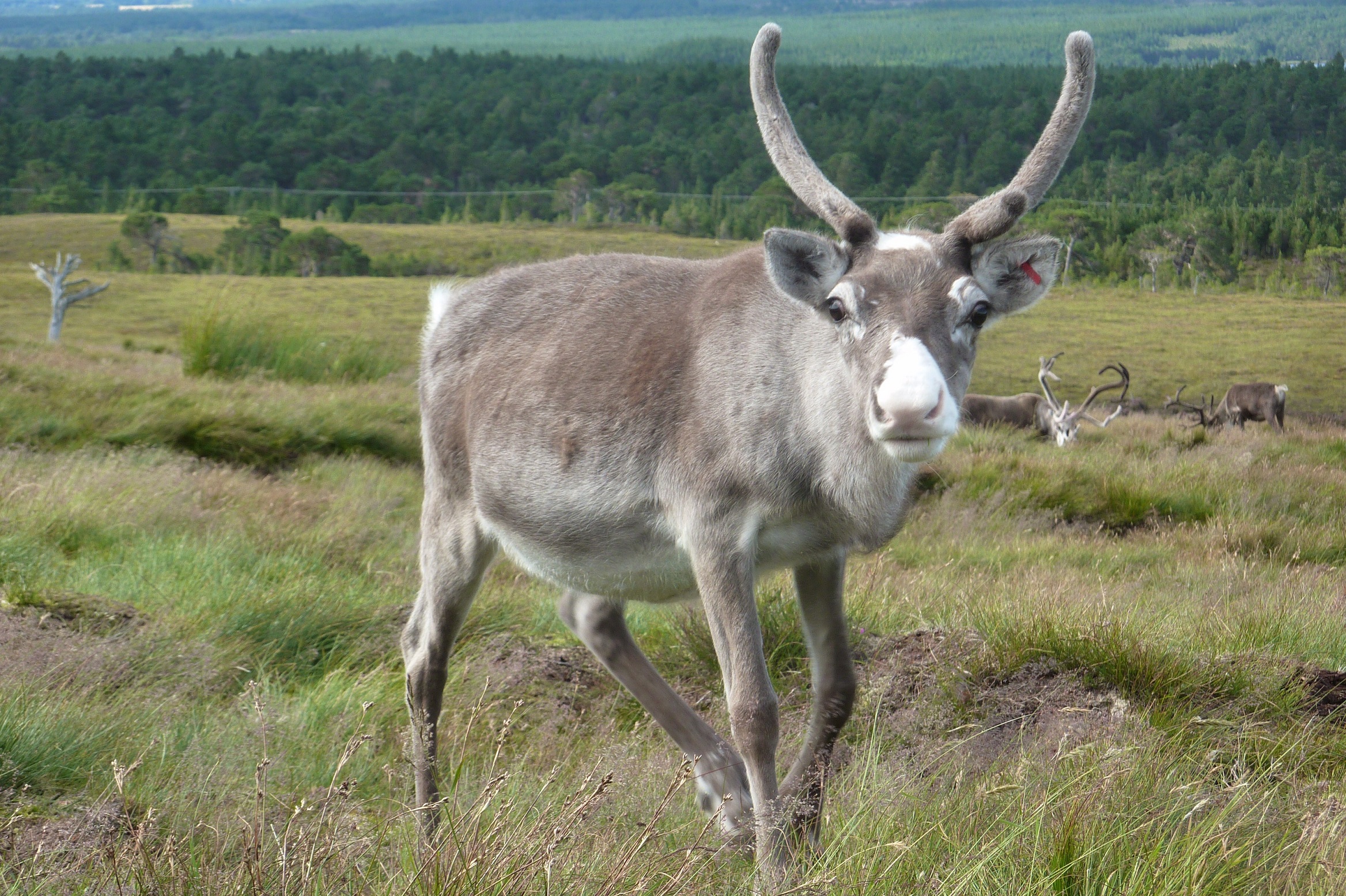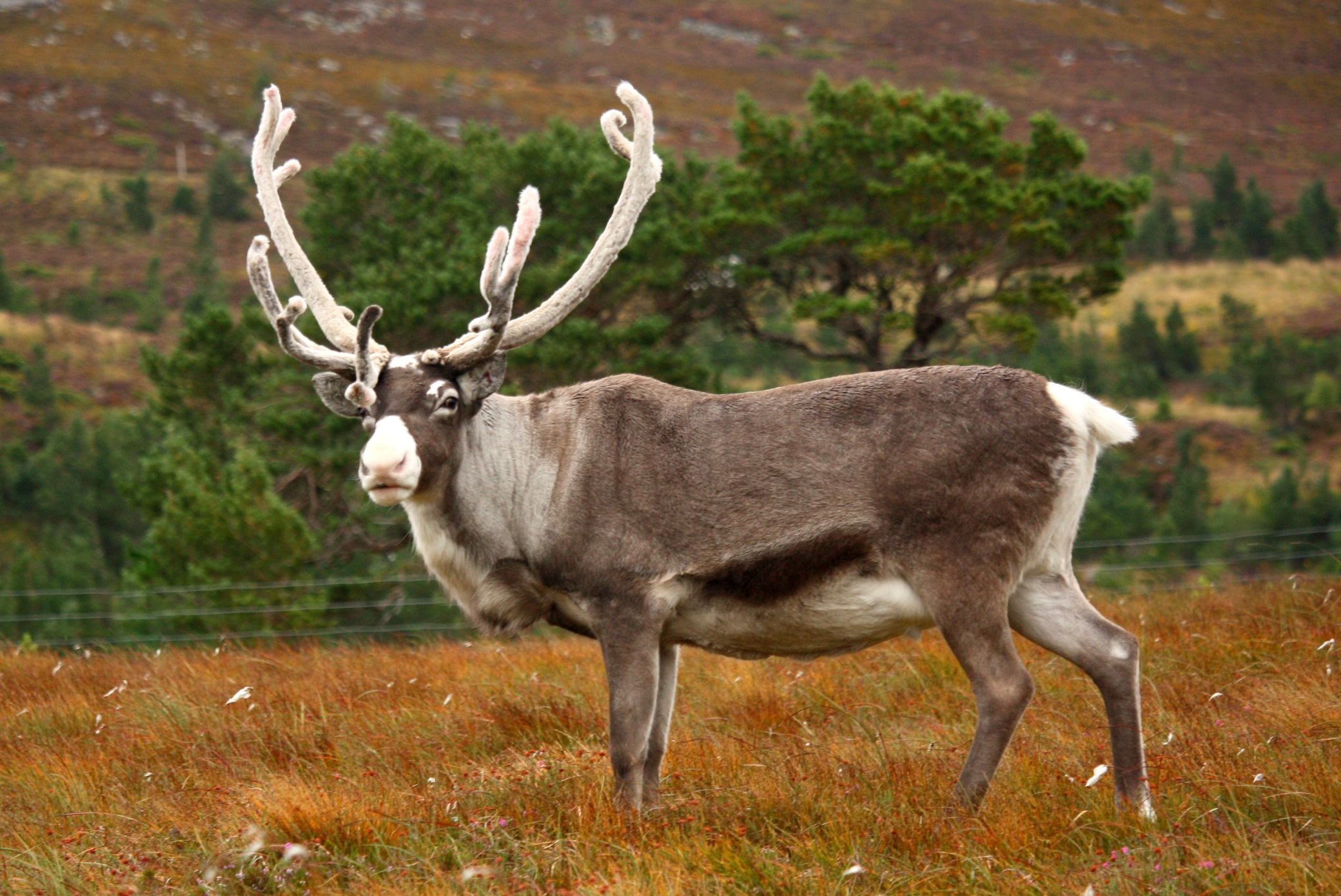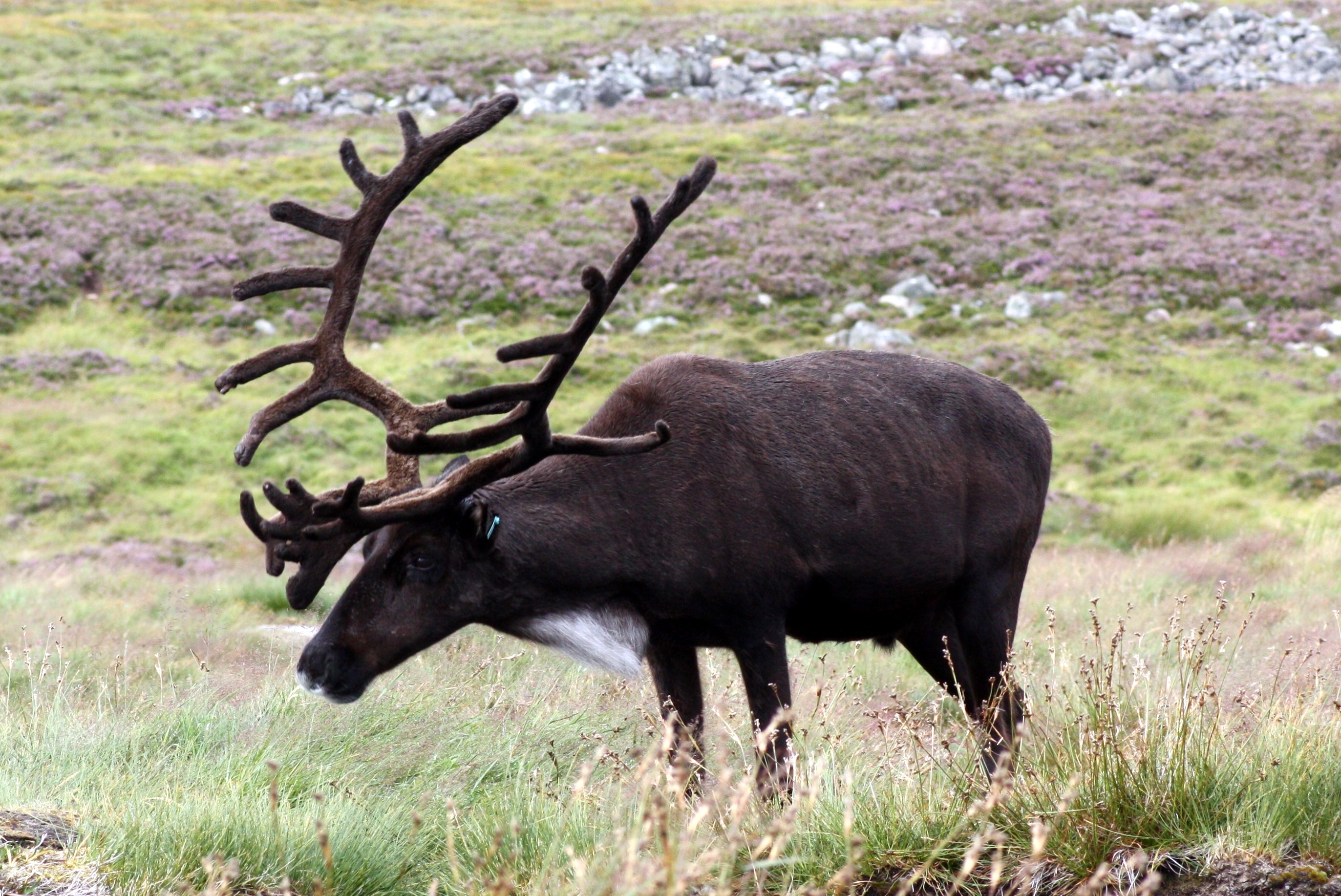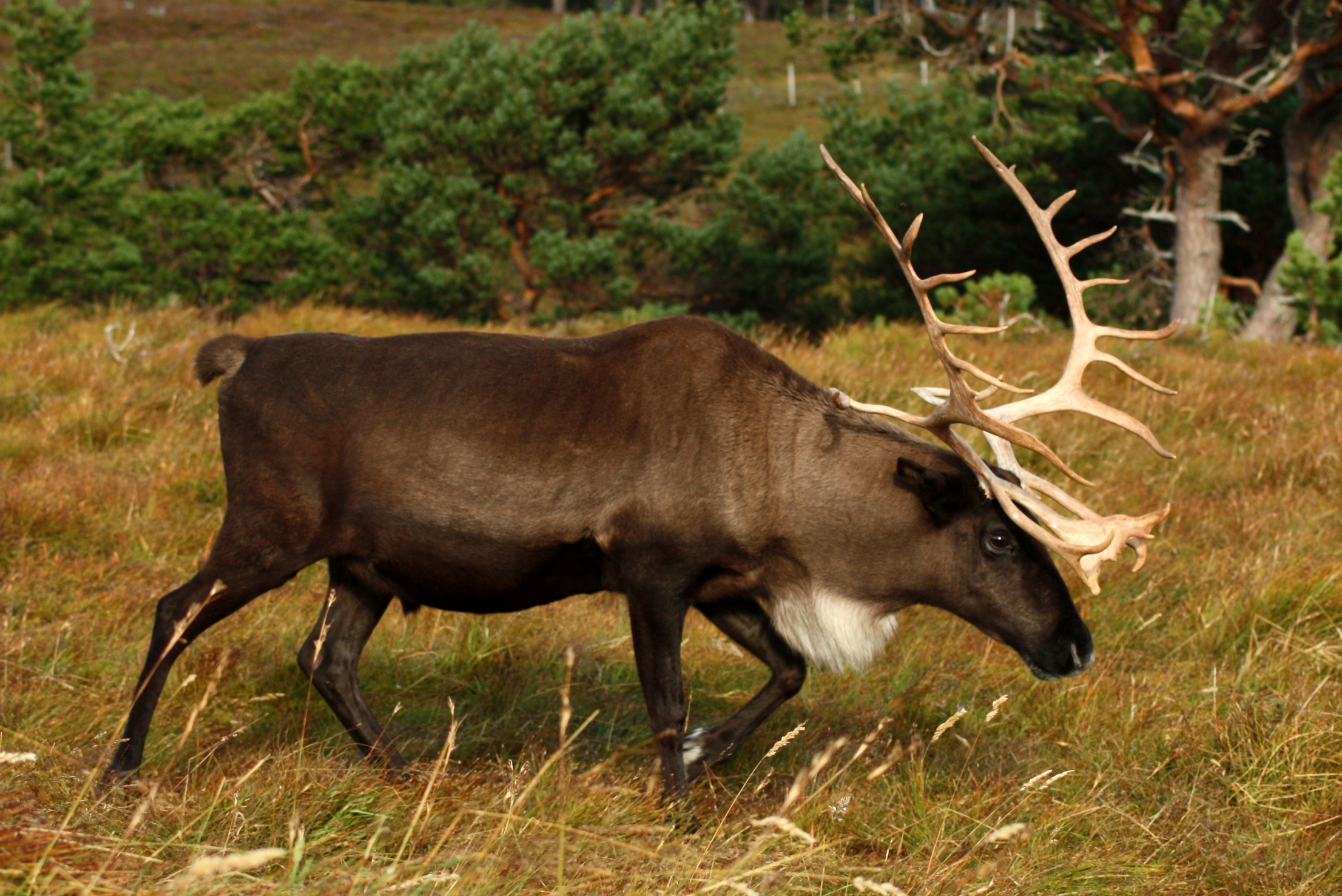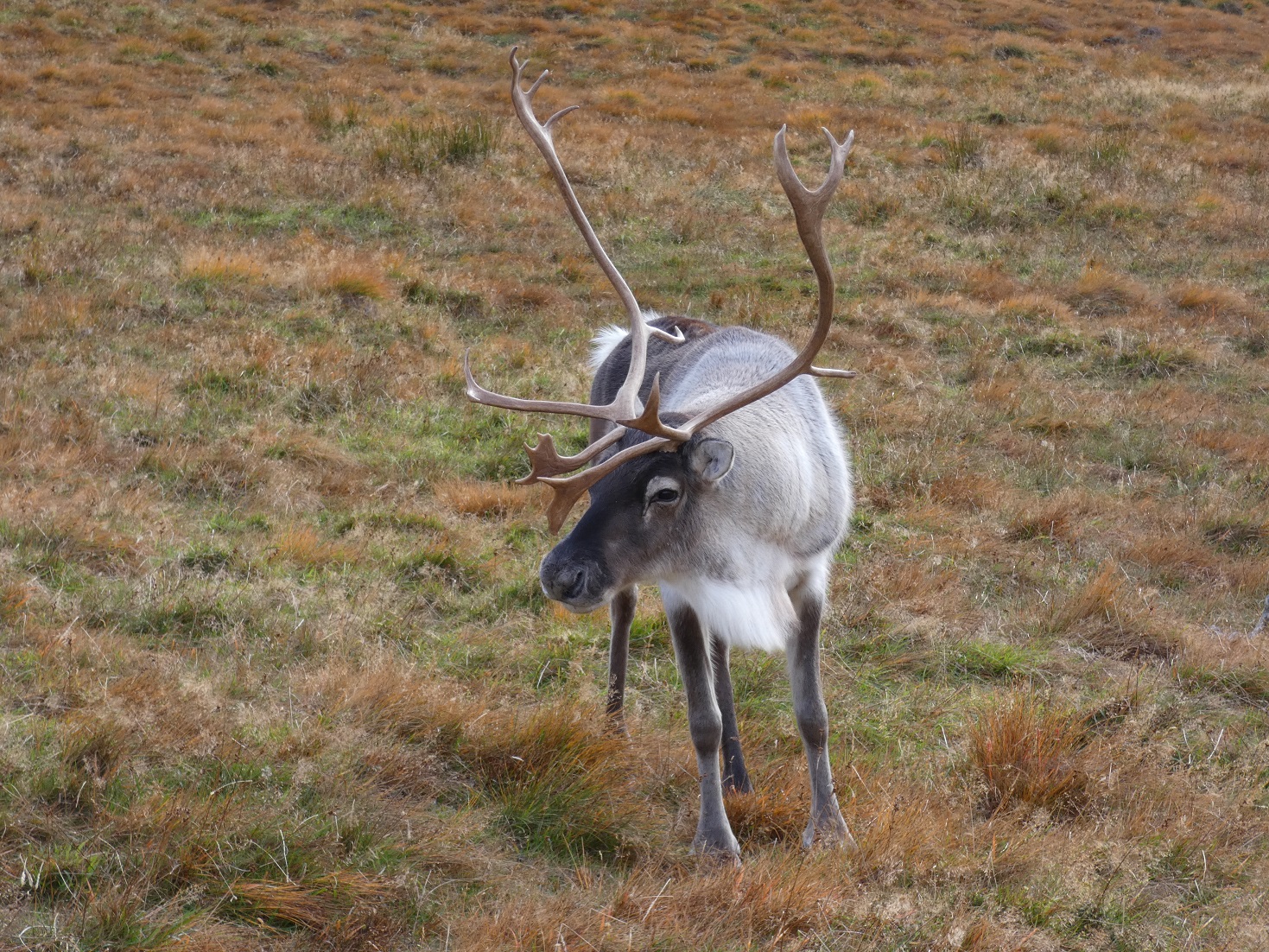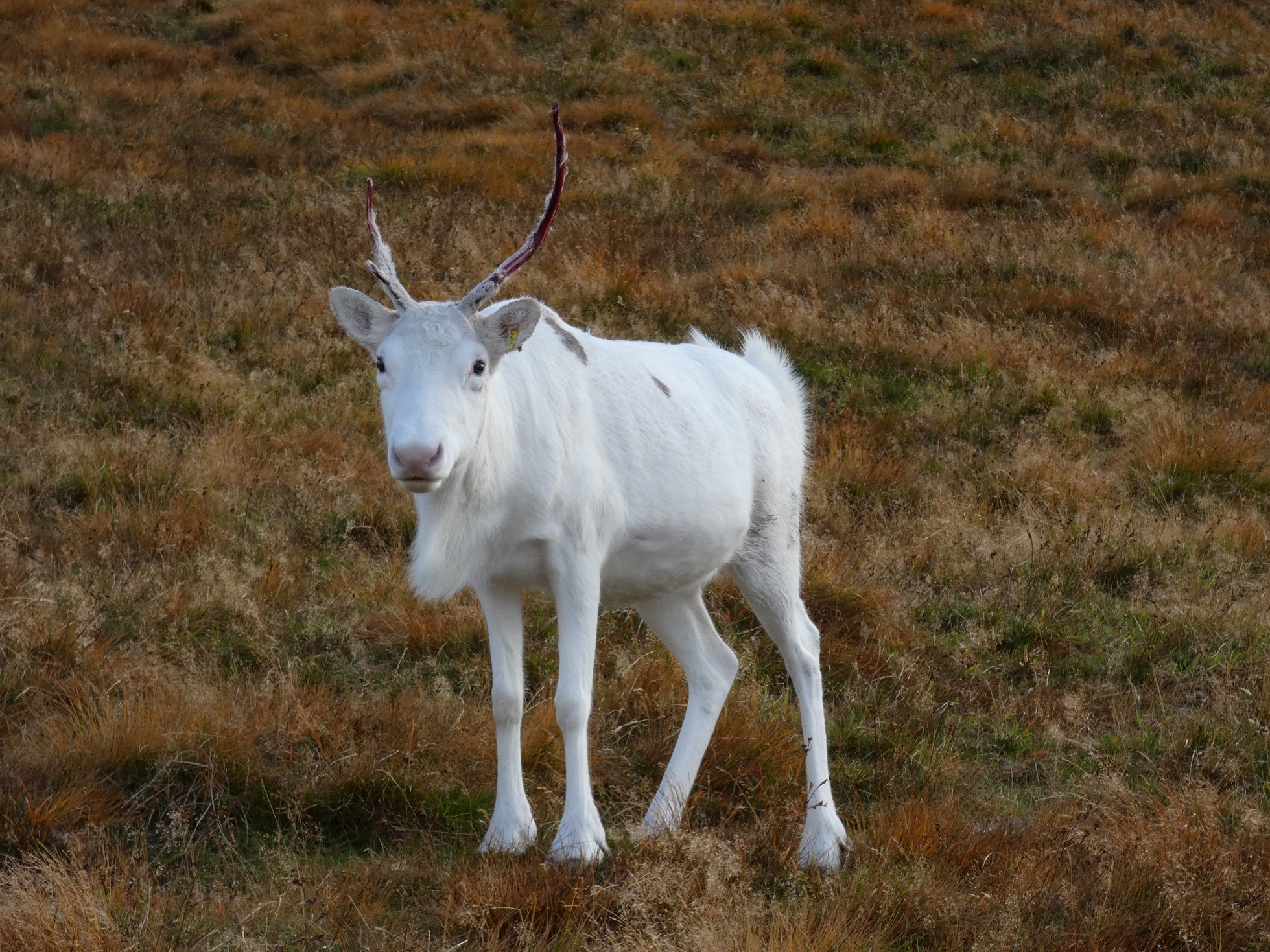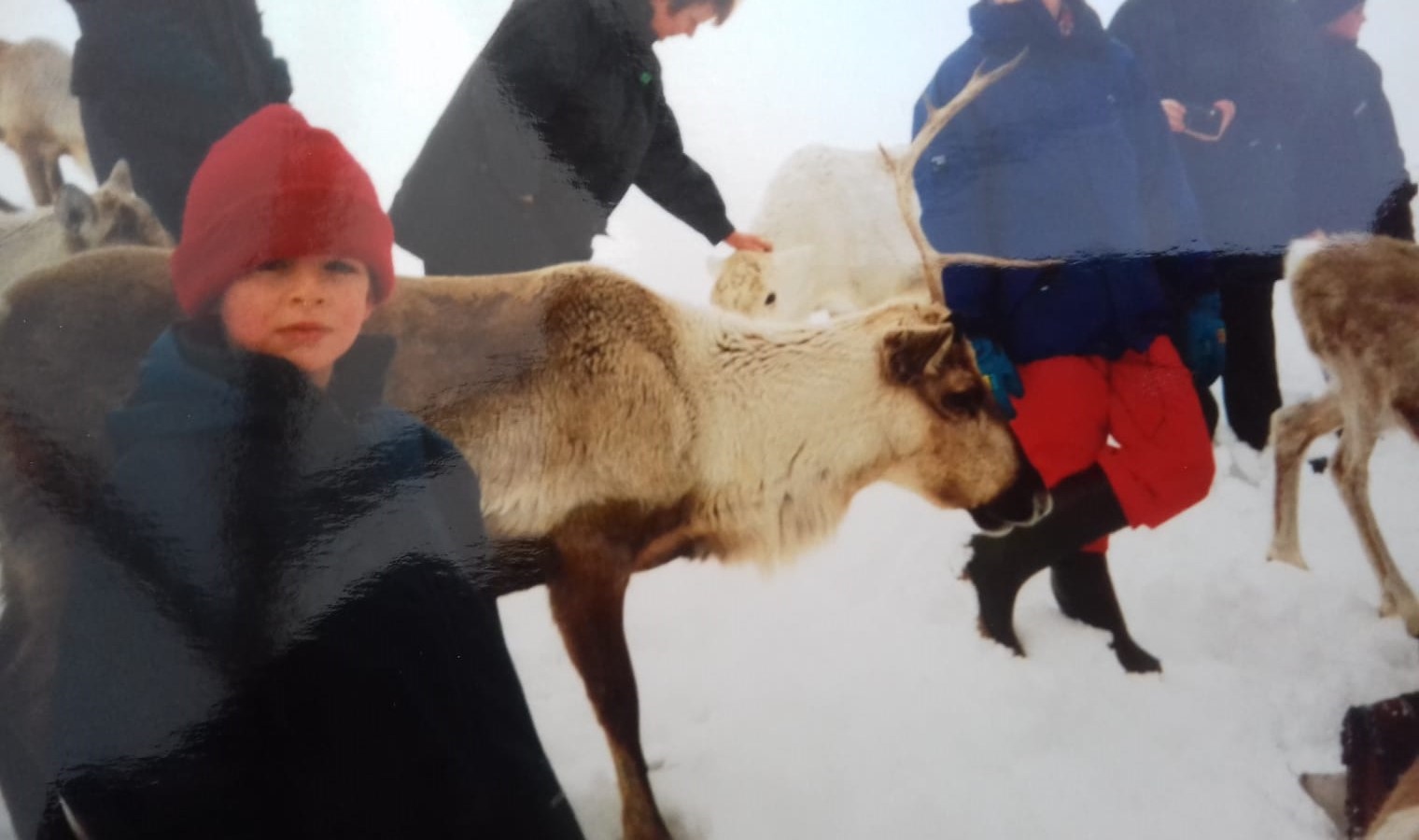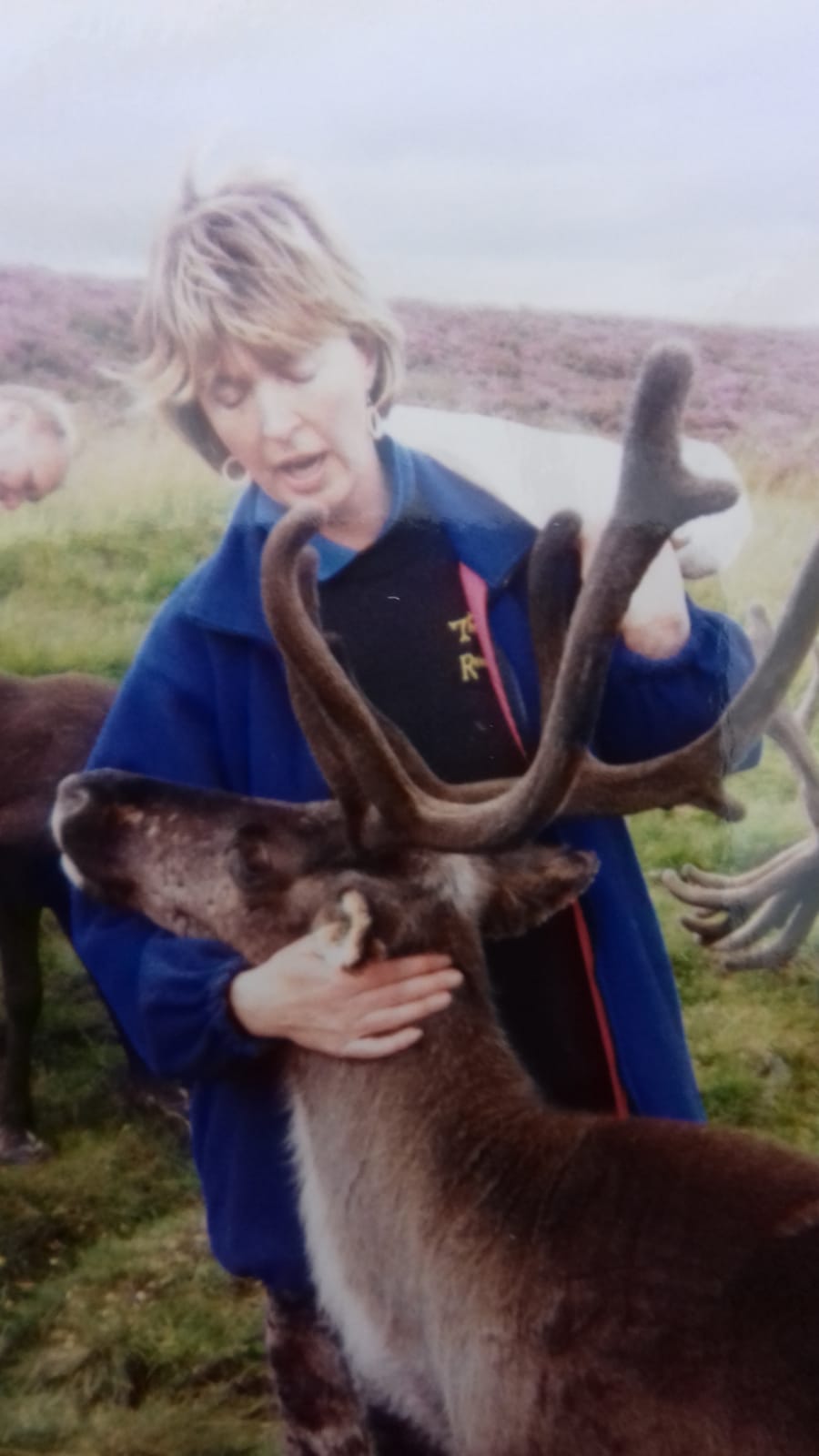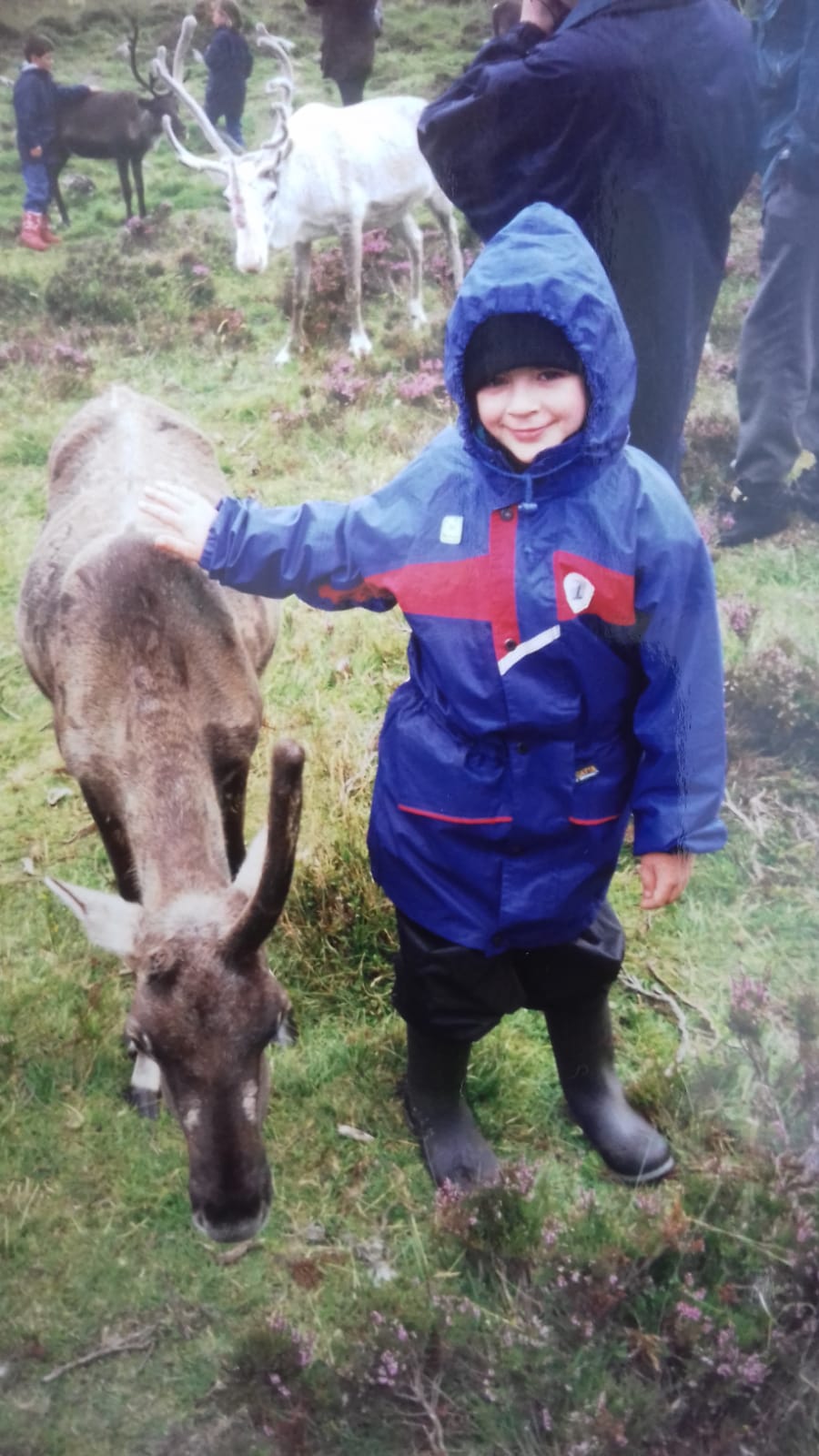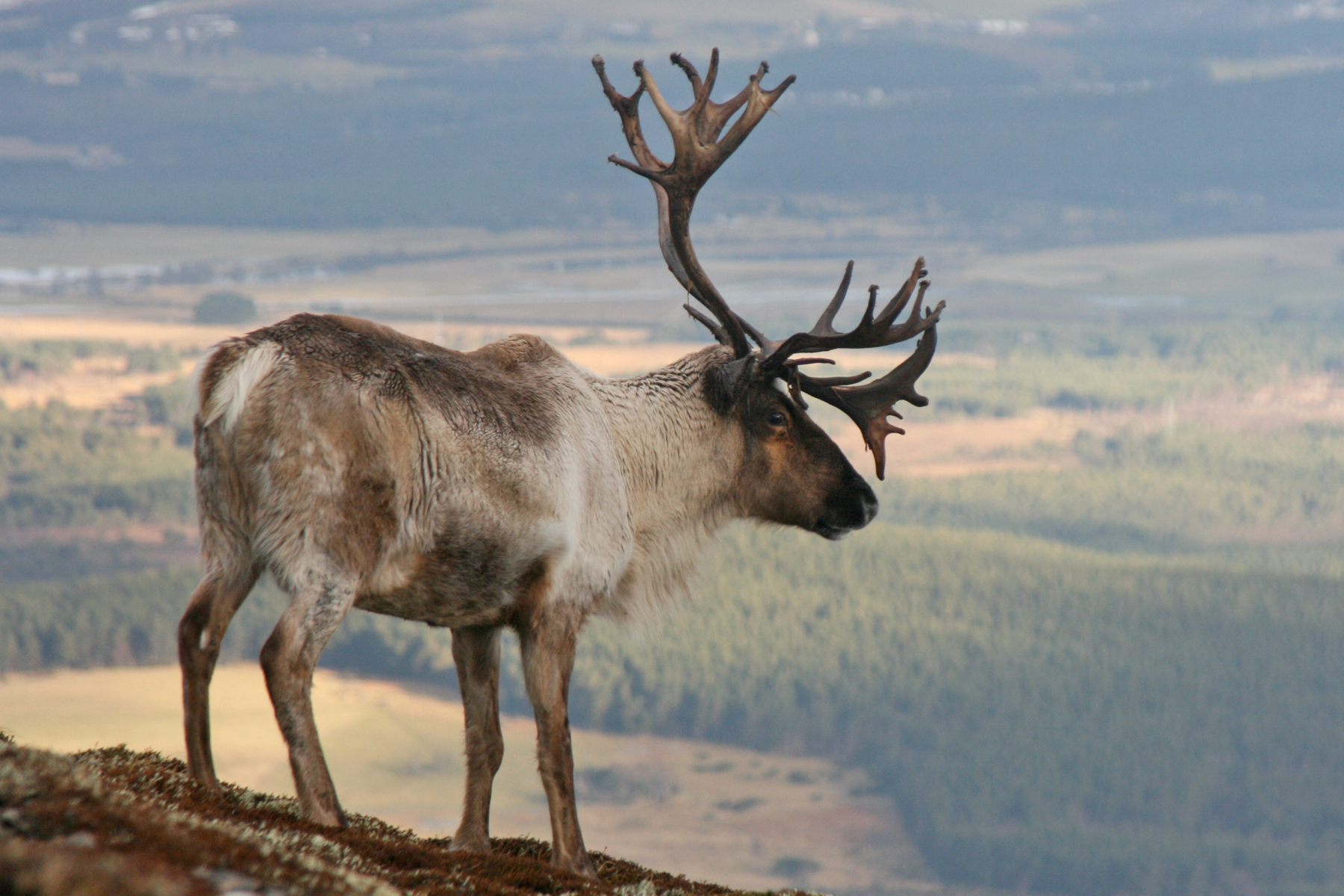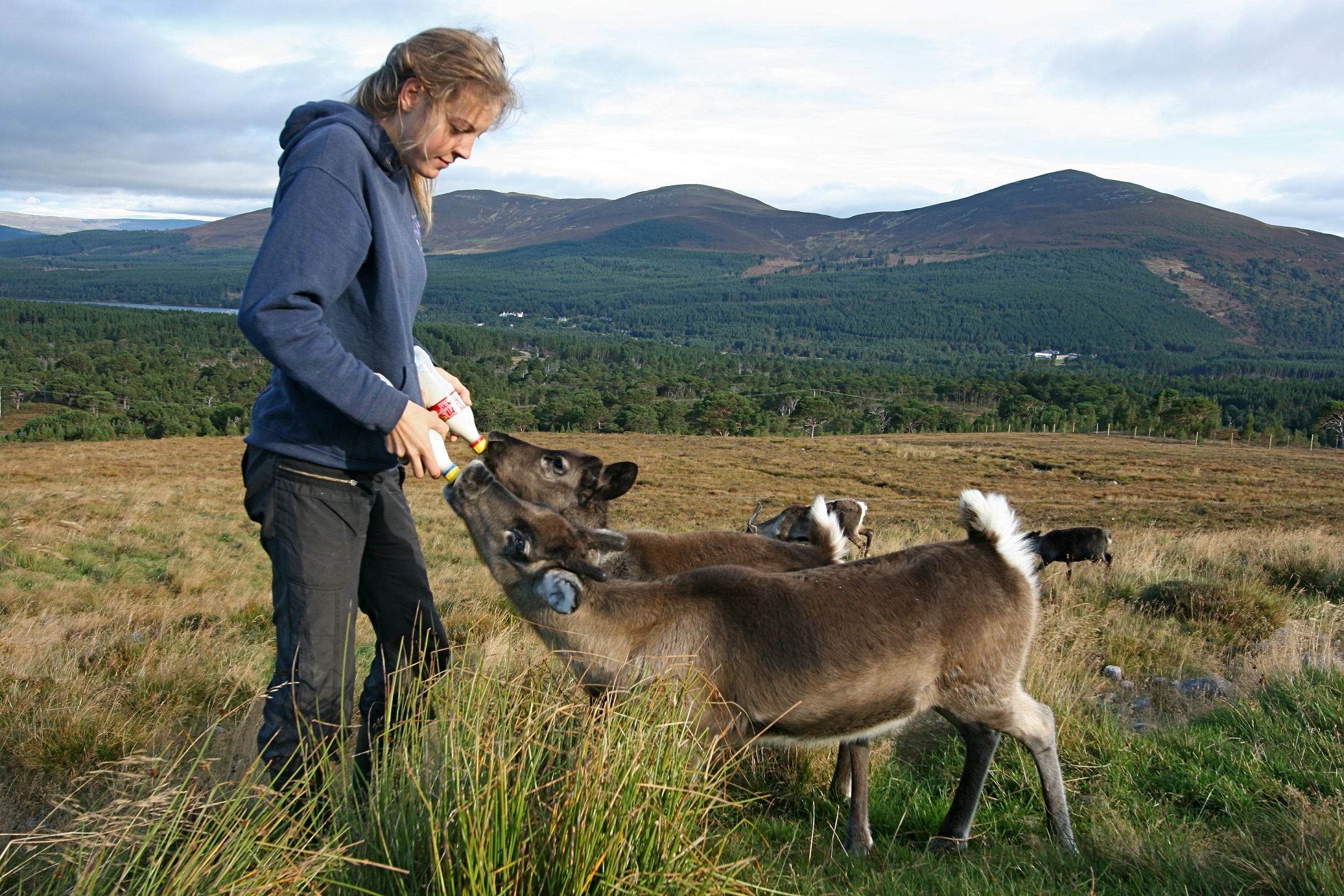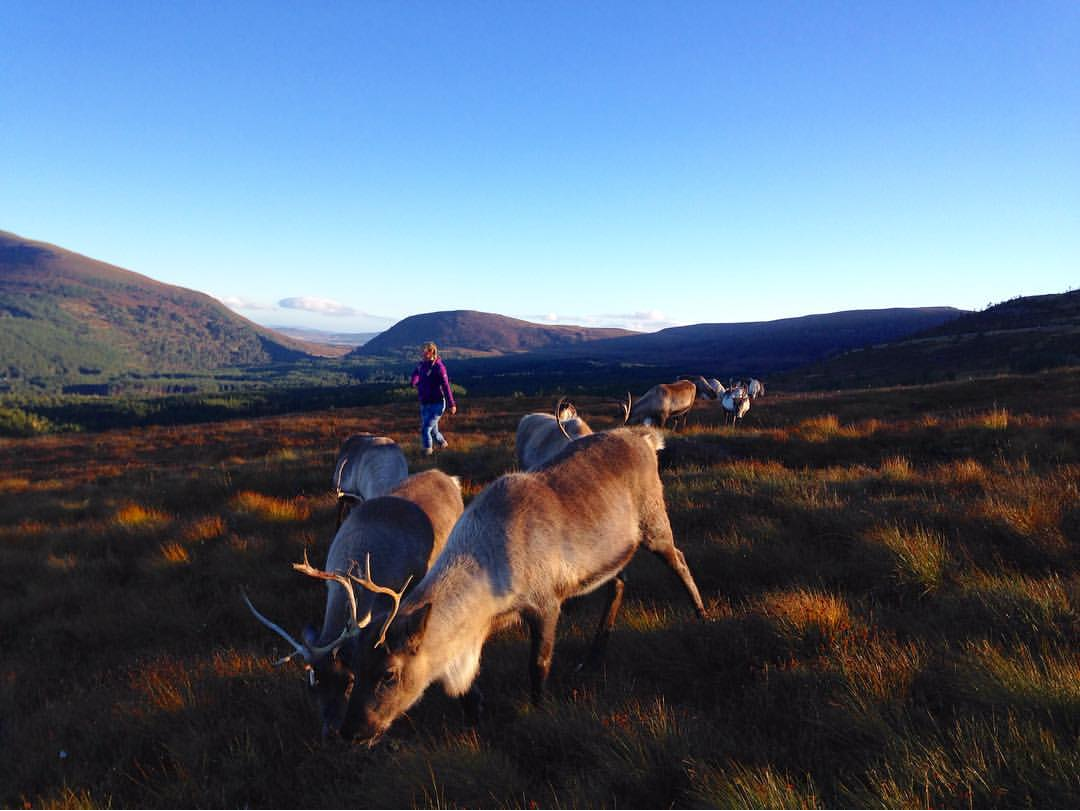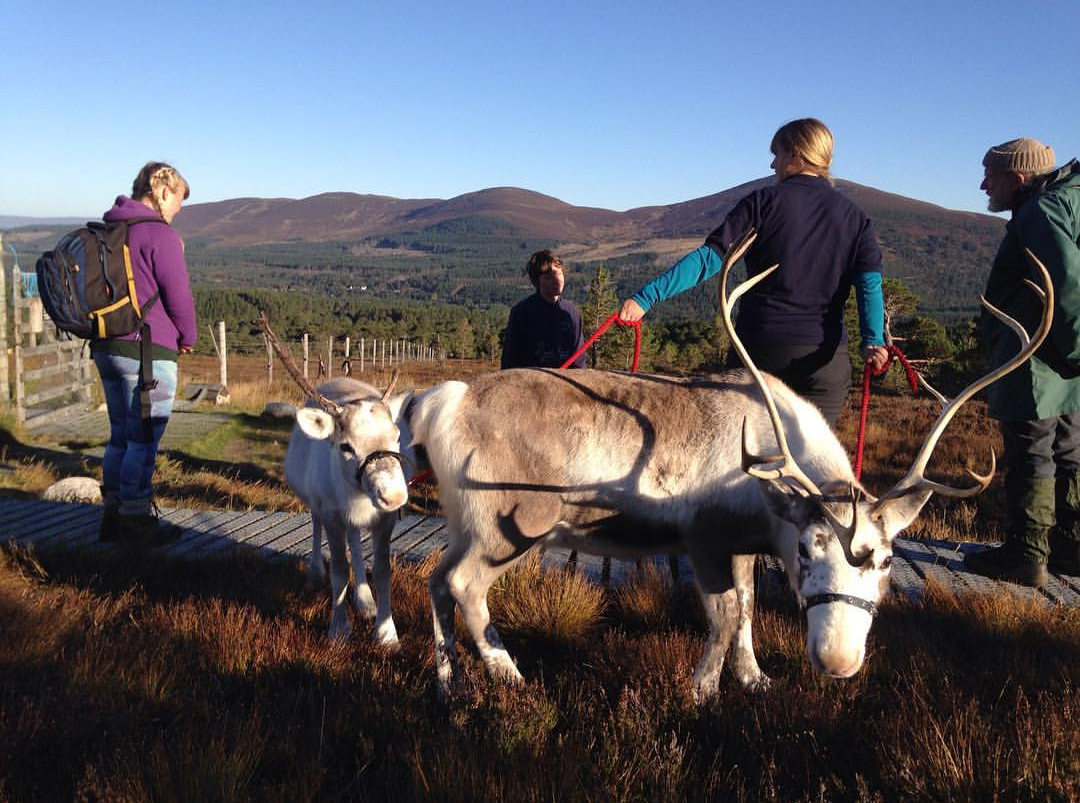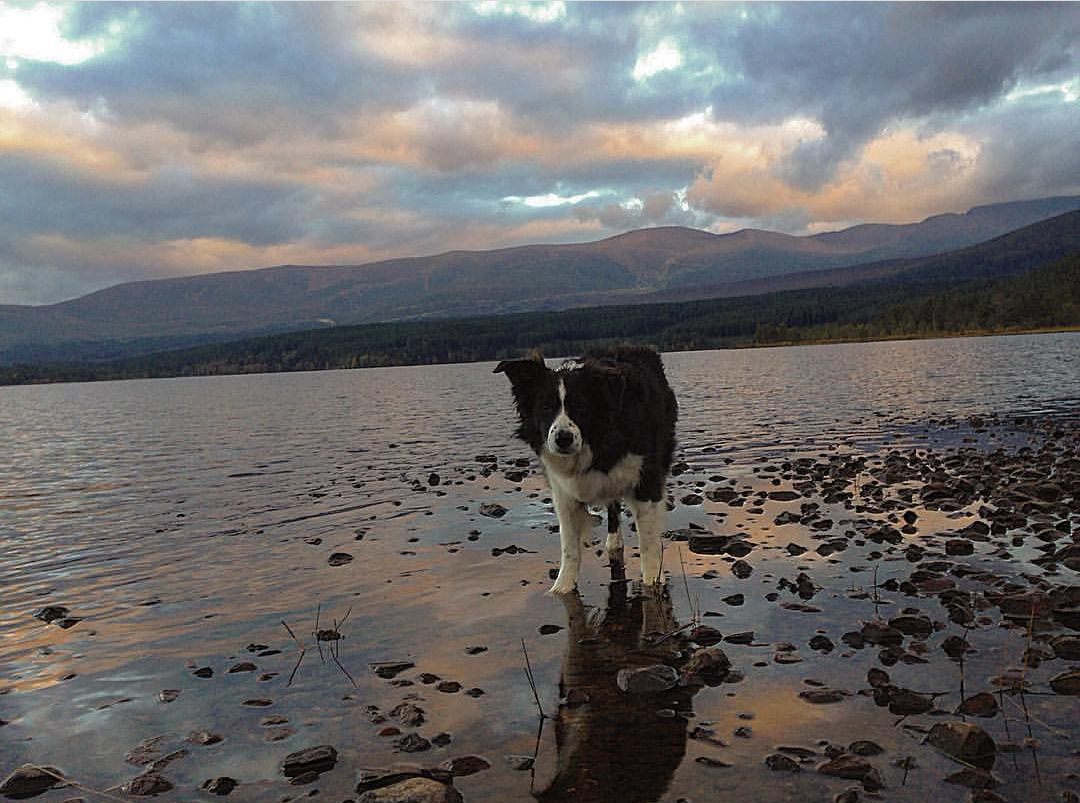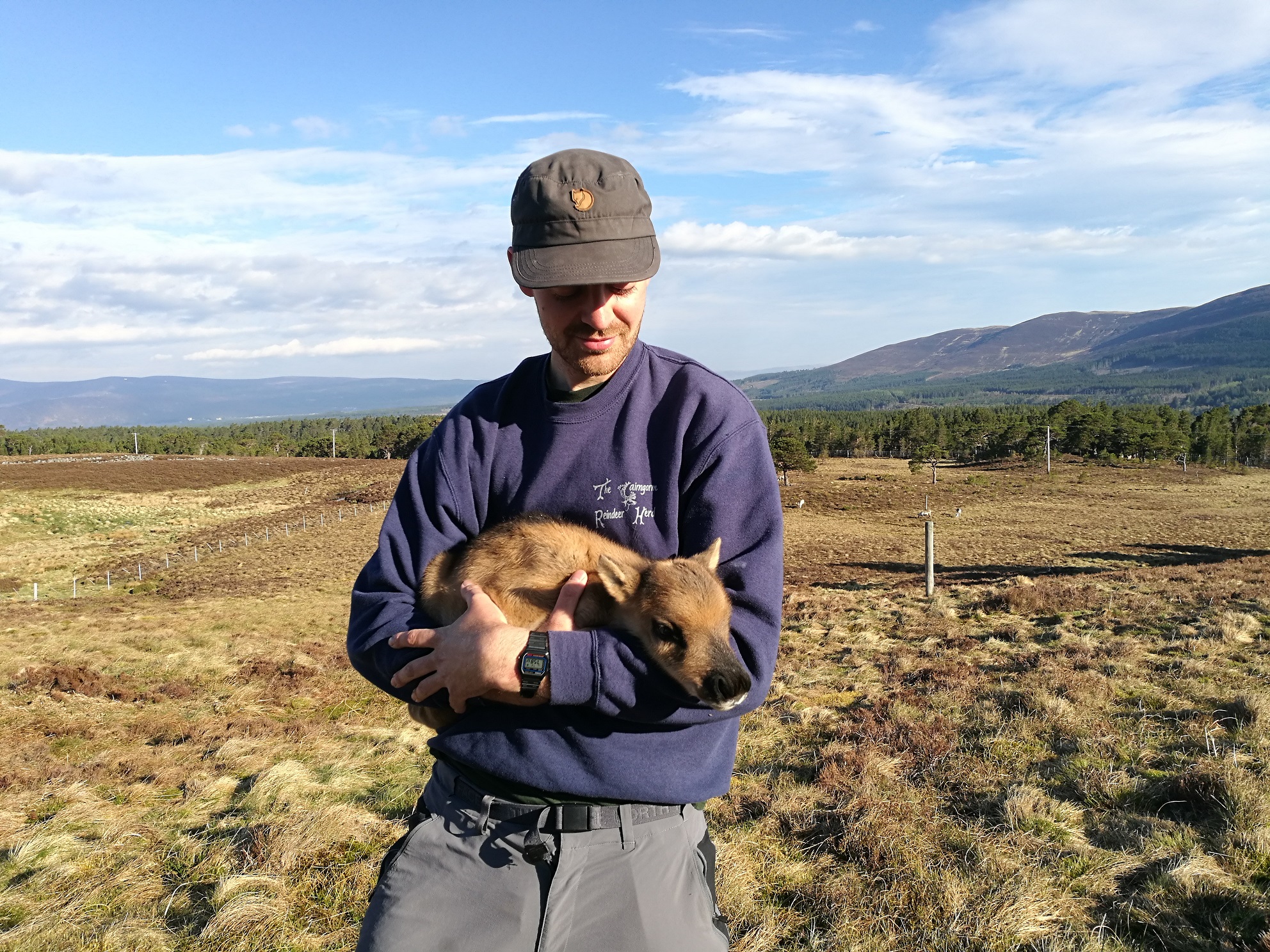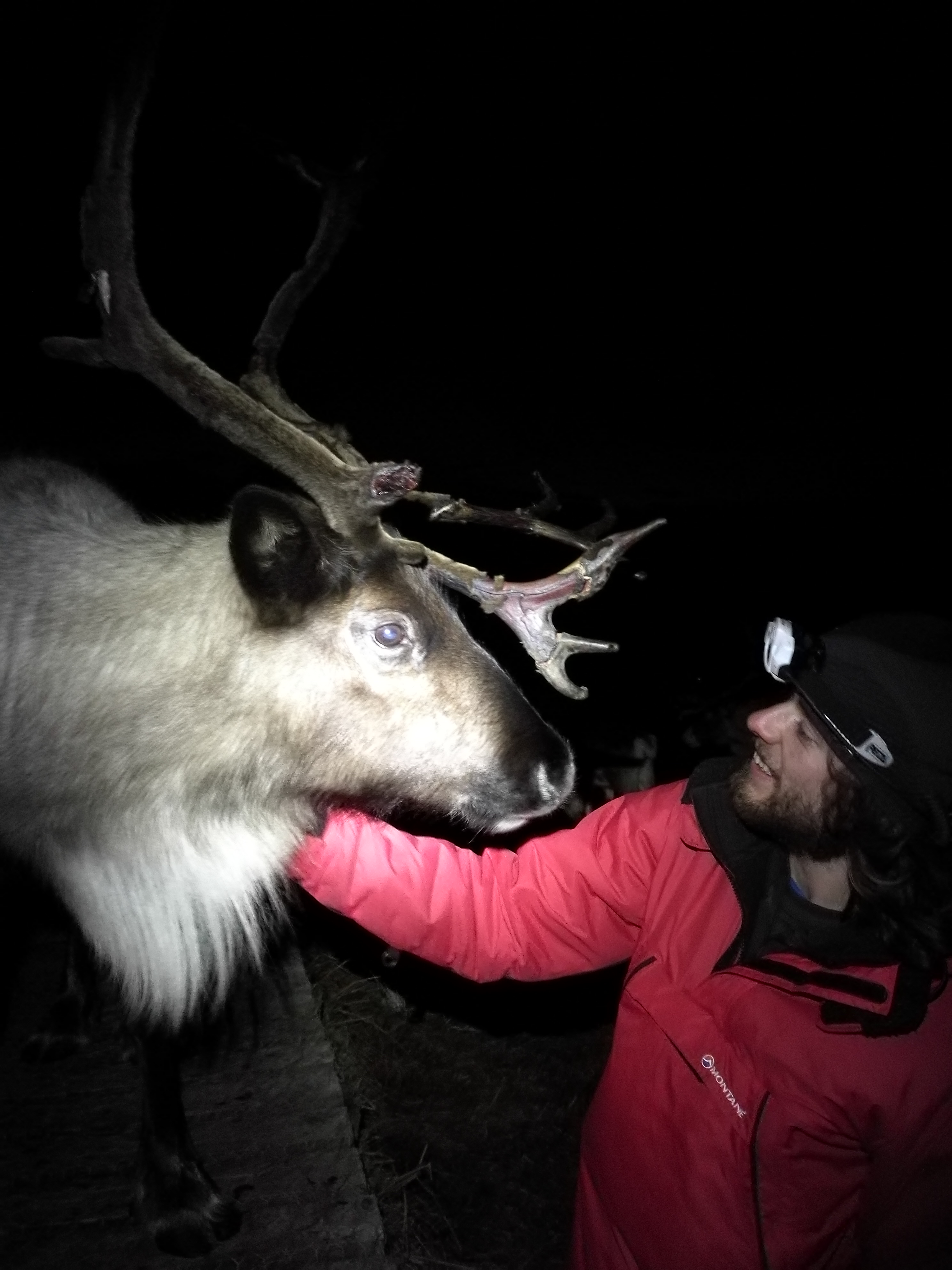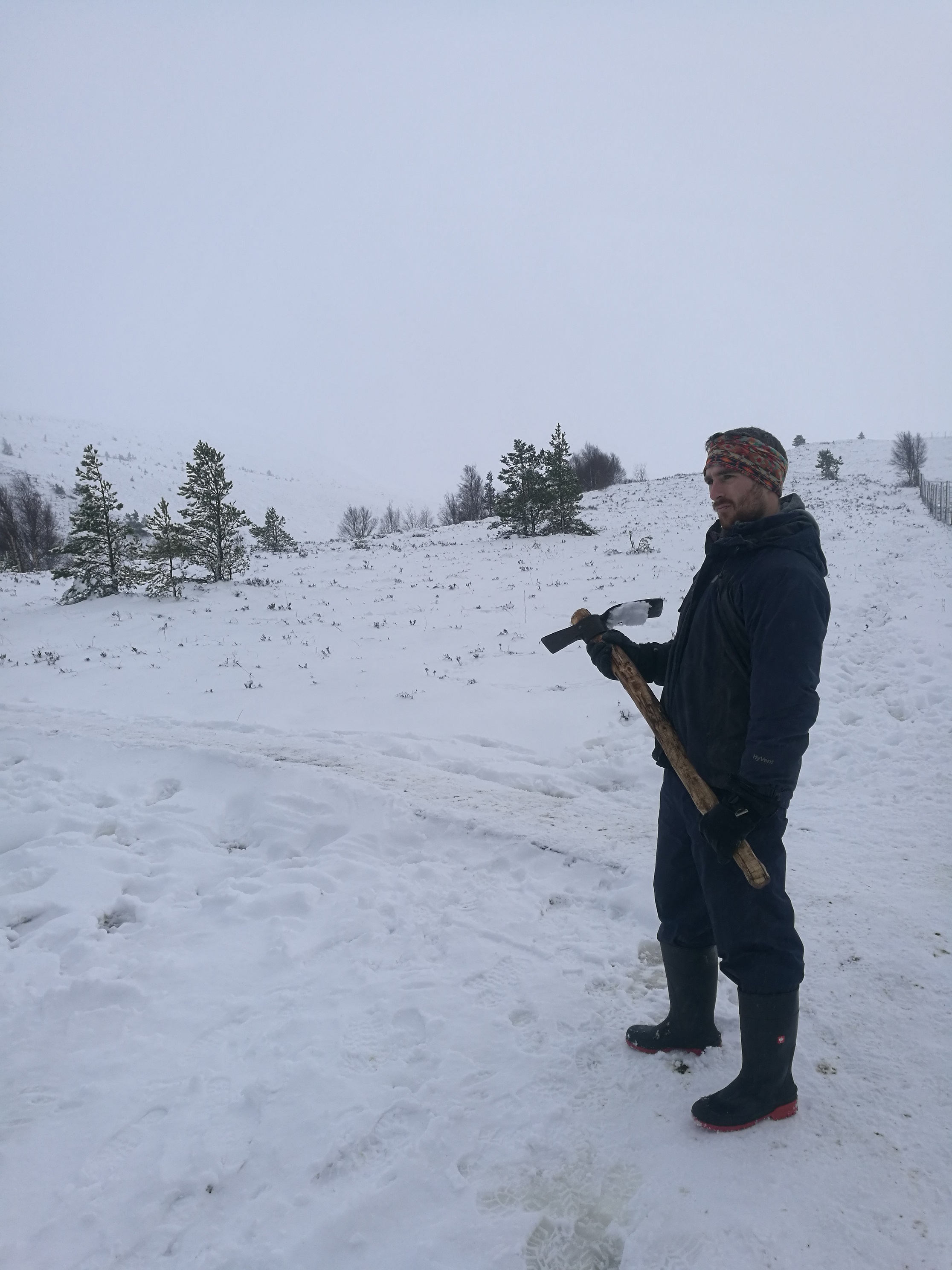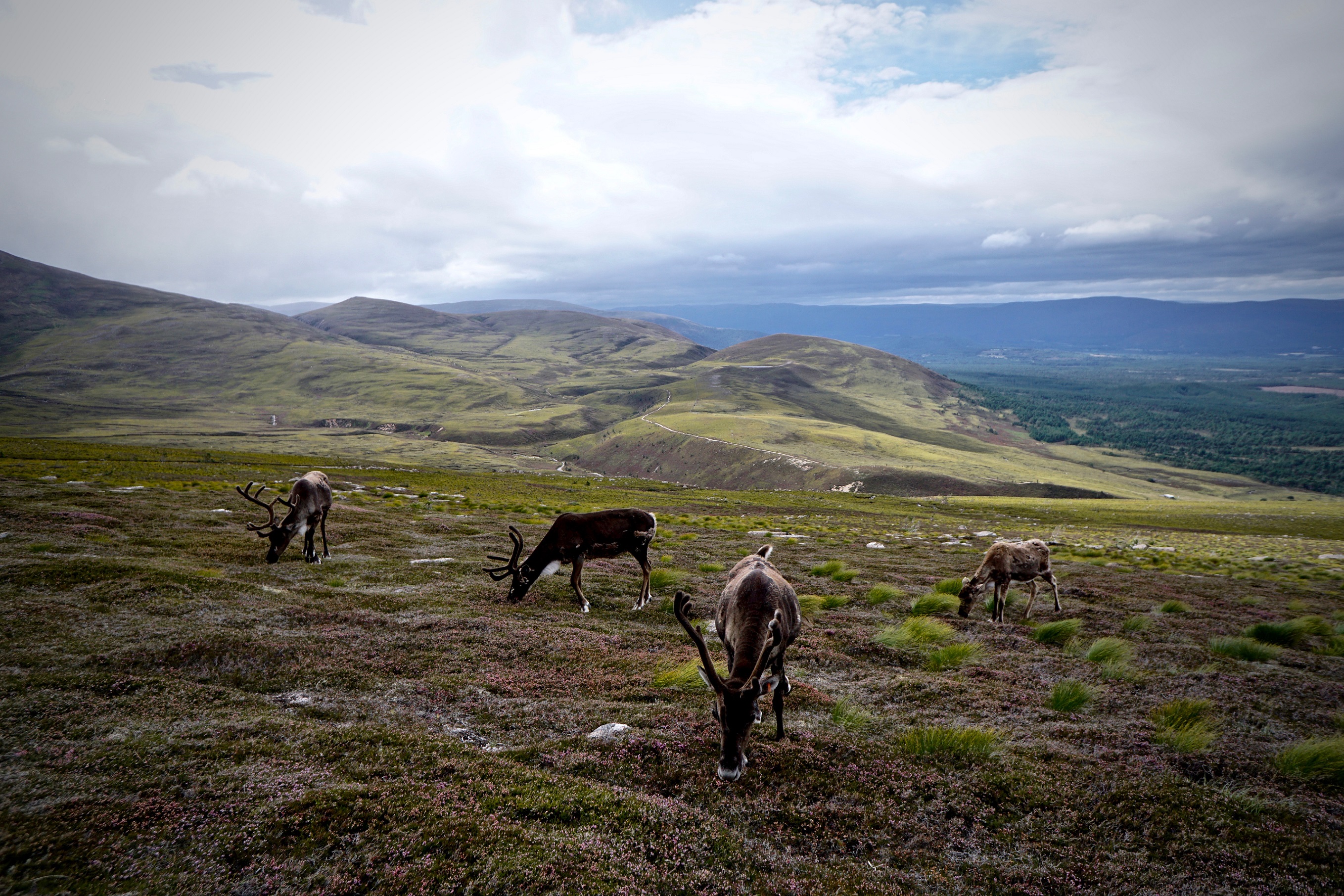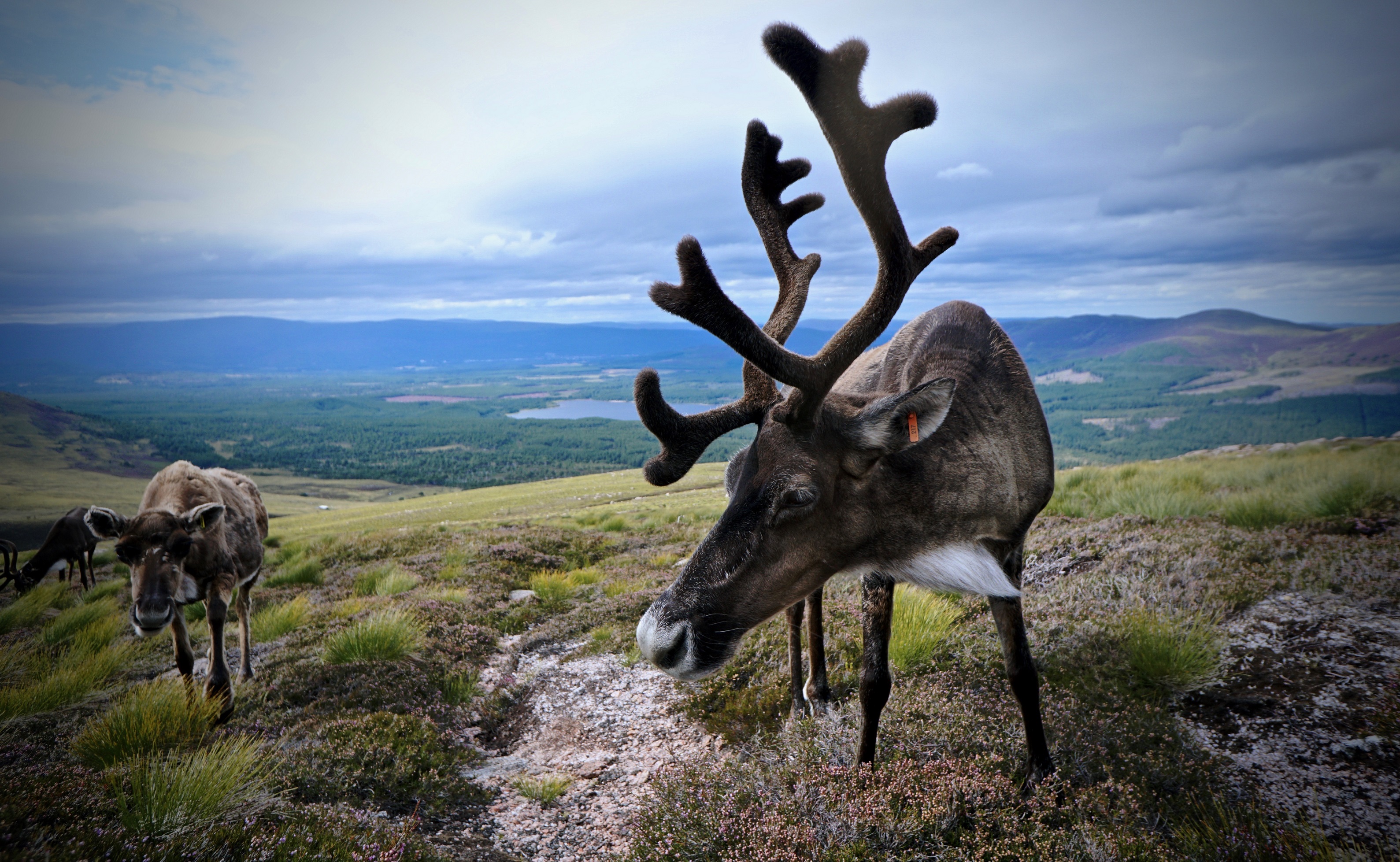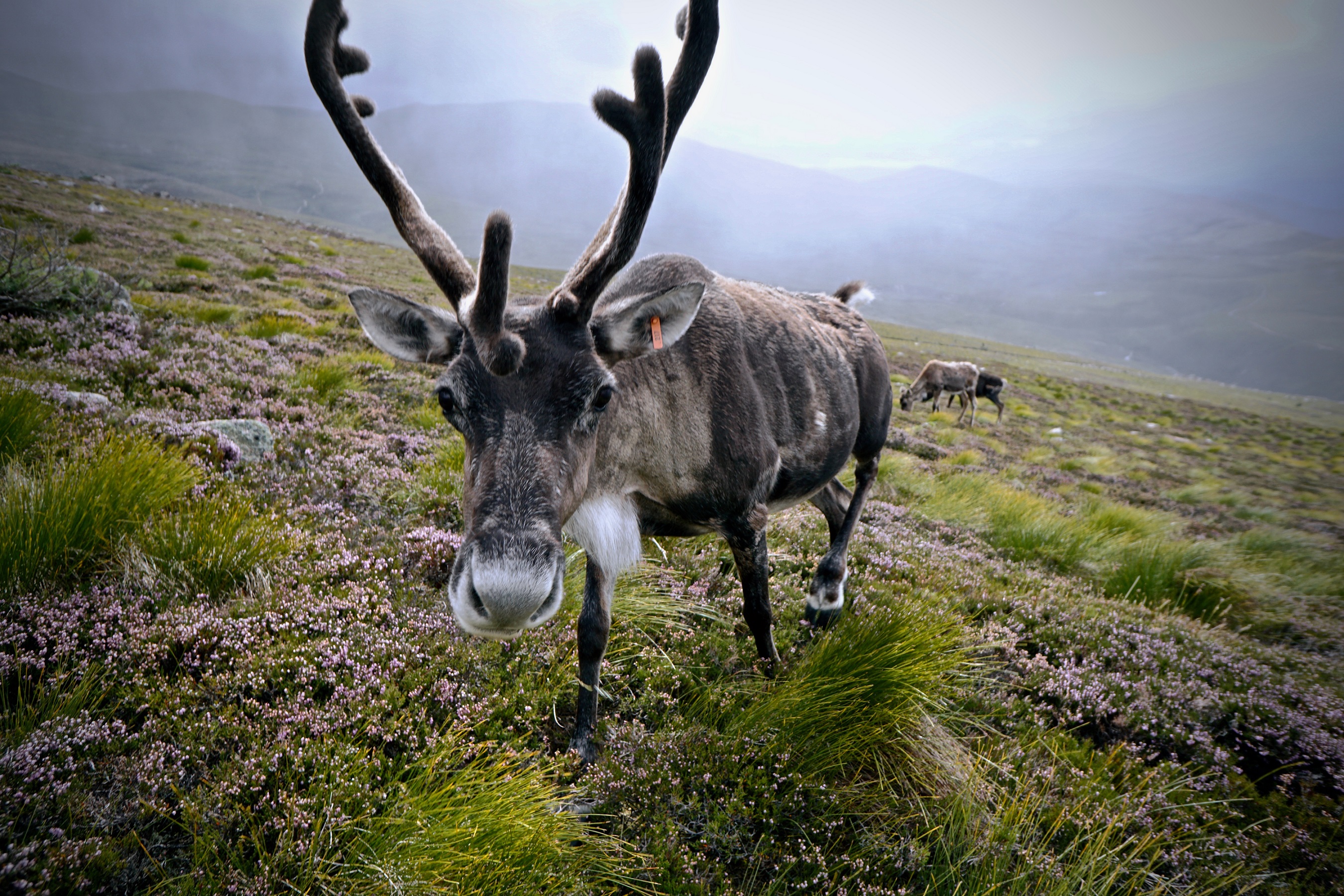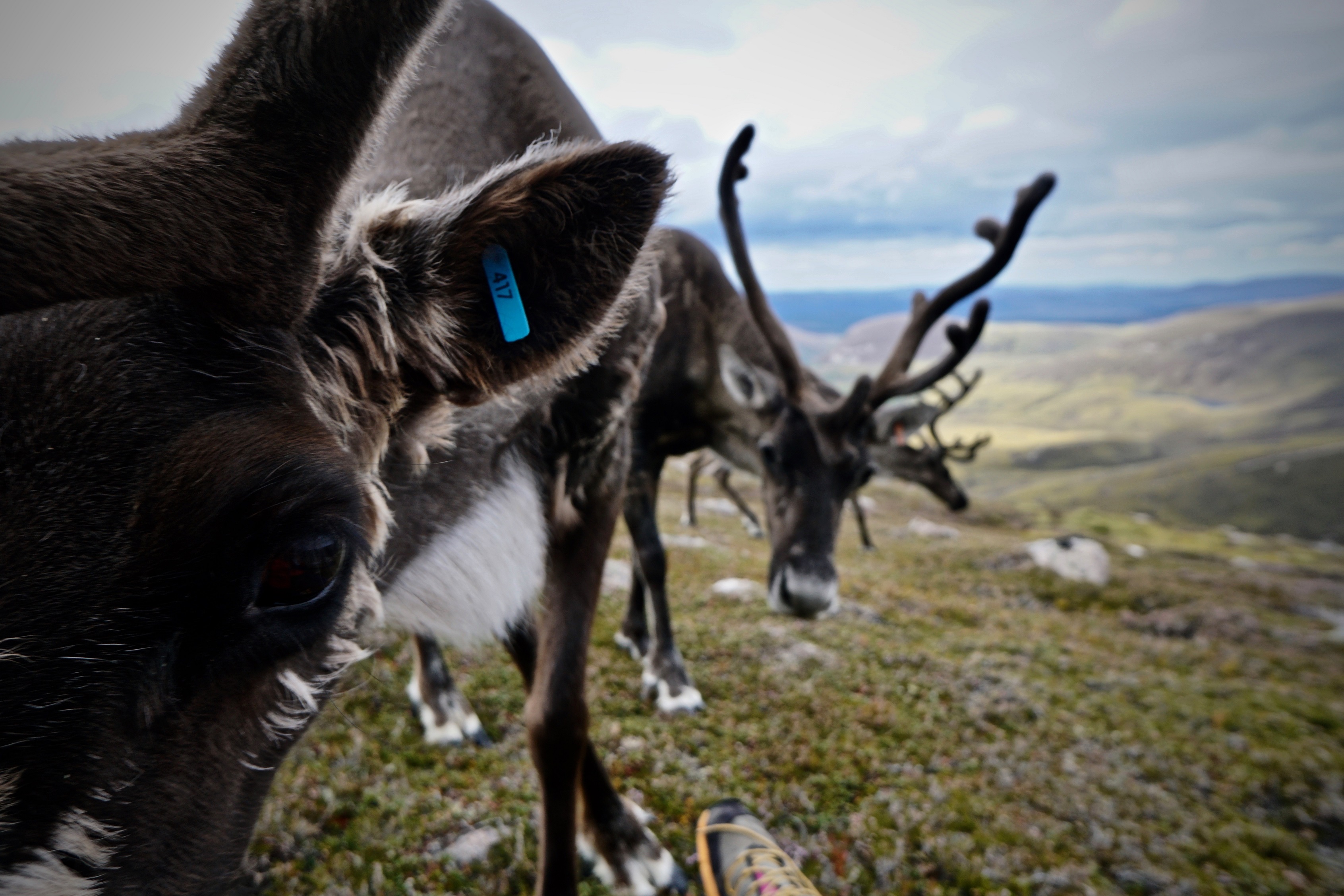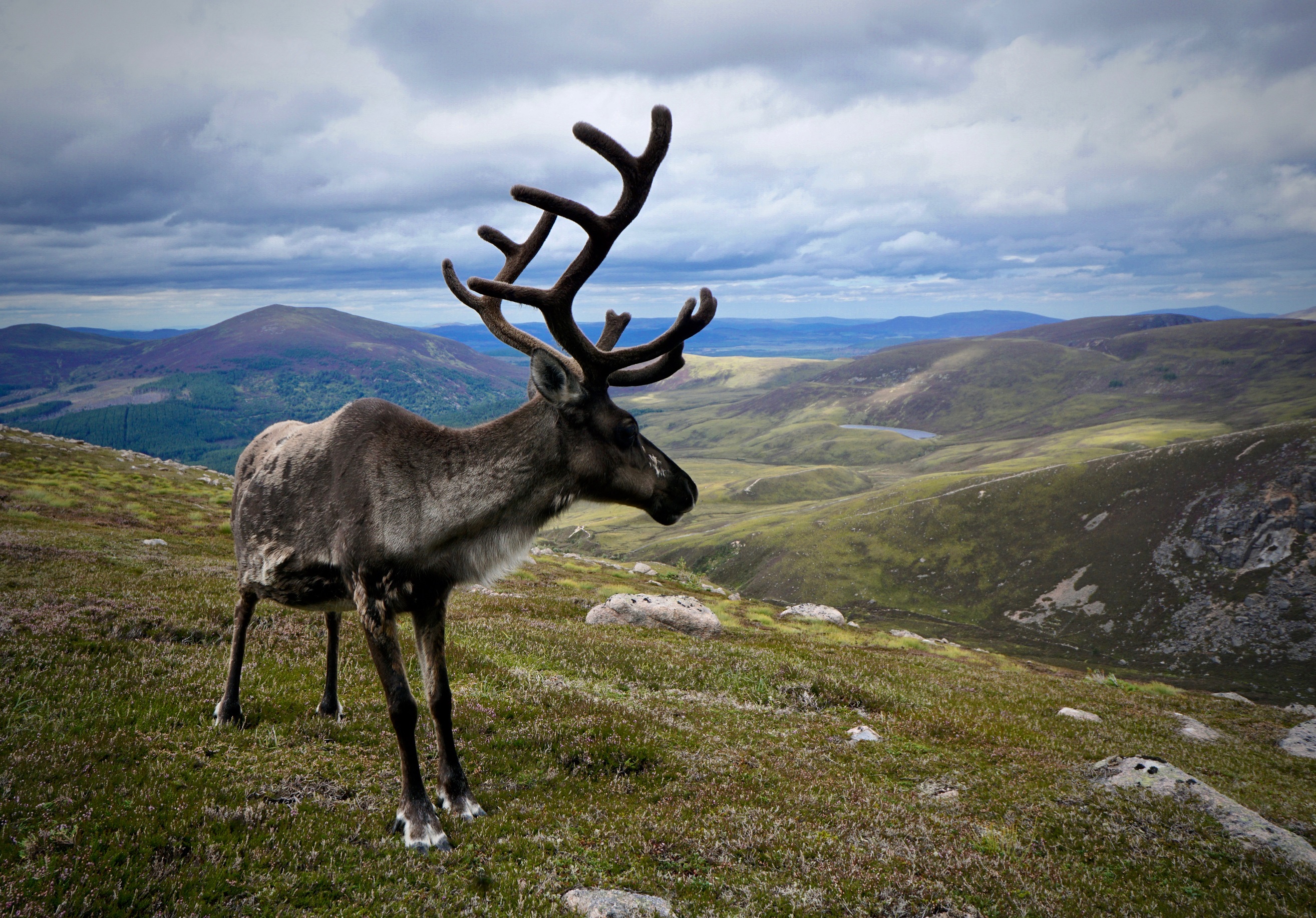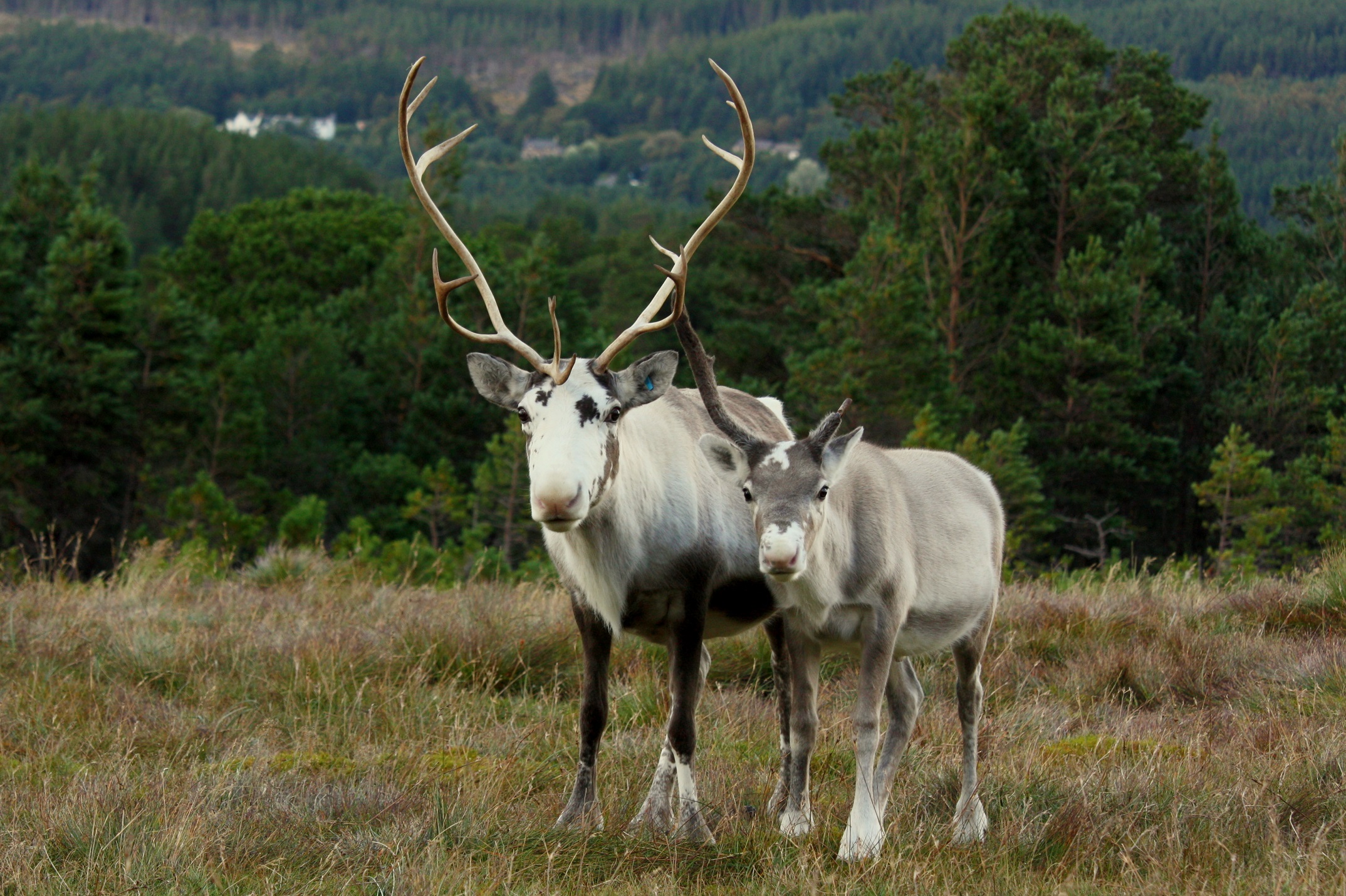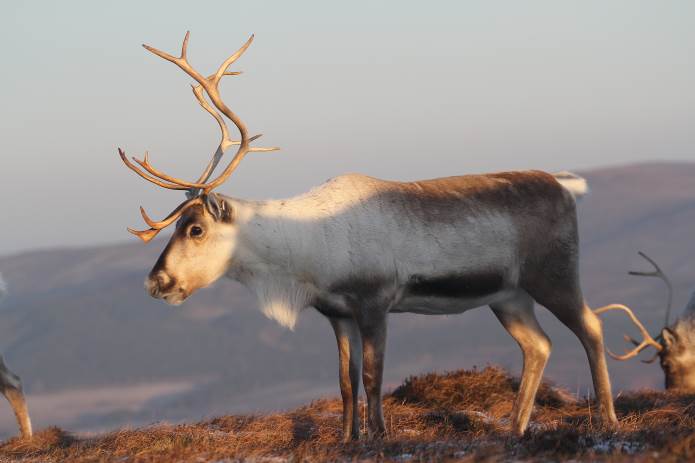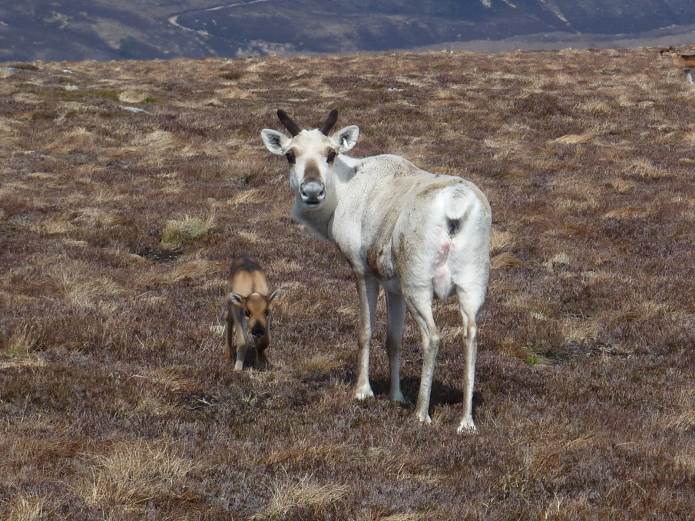Volunteering Winter 2017 /2018
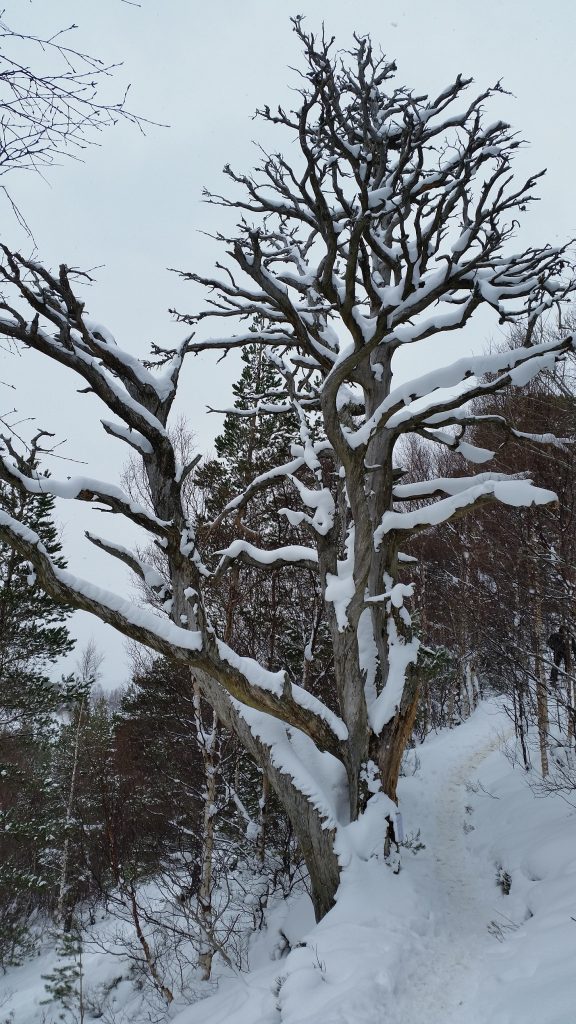
Last winter I had the amazing pleasure of volunteering at the Cairngorm Reindeer Centre for the first time. After two poor winters, and by poor winters I mean that we had a lack of snow. Most people in the UK would probably deem a good winter one with little snow. But here in Aviemore and the Cairngorms, both as skiers and Reindeer Herders, a good winter is one with a plentiful supply of snow! And preferably one with as little of the usual high winds as possible. Thankfully, this year, our snow dances were answered with a good supply of snow and a fairly long winter season.
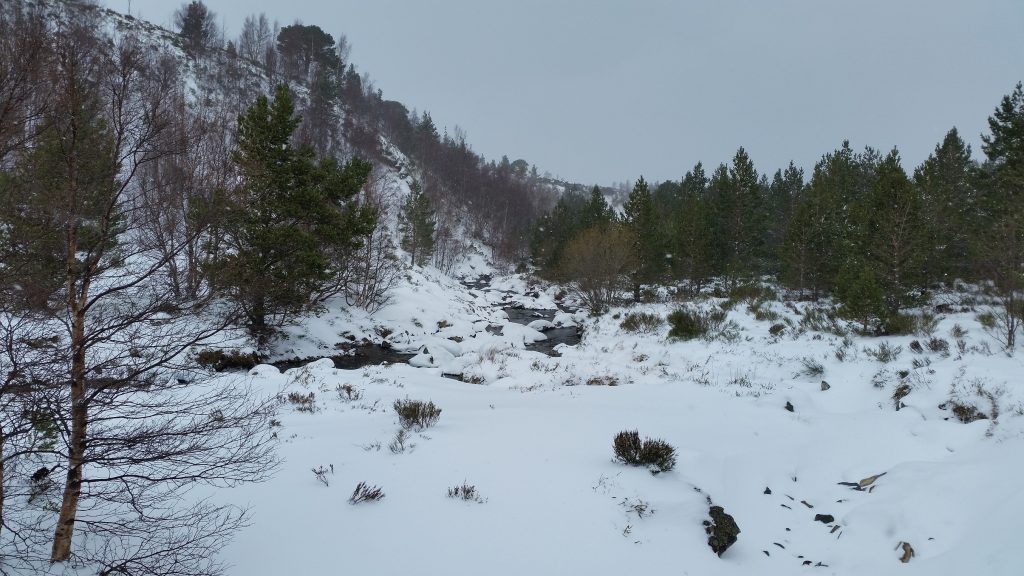
On the days I volunteered we had calf deep snow to trudge through and 60mph cross winds to battle through to find the Reindeer Herd first thing in the morning. This was my first experience of seeing these magnificent animals in their natural environment out on the Free Range on the mountains. This was also the first time I had the pleasure of hearing the traditional Sami call Reindeer Herders use to summon the Reindeer down from the mountains. To my surprise the Reindeer weren’t sheltering in any of the Corrie’s out of the wind, but instead were standing on the most exposed ridges bearing the brunt of the strongest gusts of wind. Once one of the Reindeer heard the recognisable call and started heading down from the ridge, being a herd animal, the rest soon followed. Once they got up close I was most surprised by how much smaller they were than I expected. We put out a line of food for the Reindeer on the snow, counted them and we checked them for their general health, as we do every time we go and see any members of the Herd.
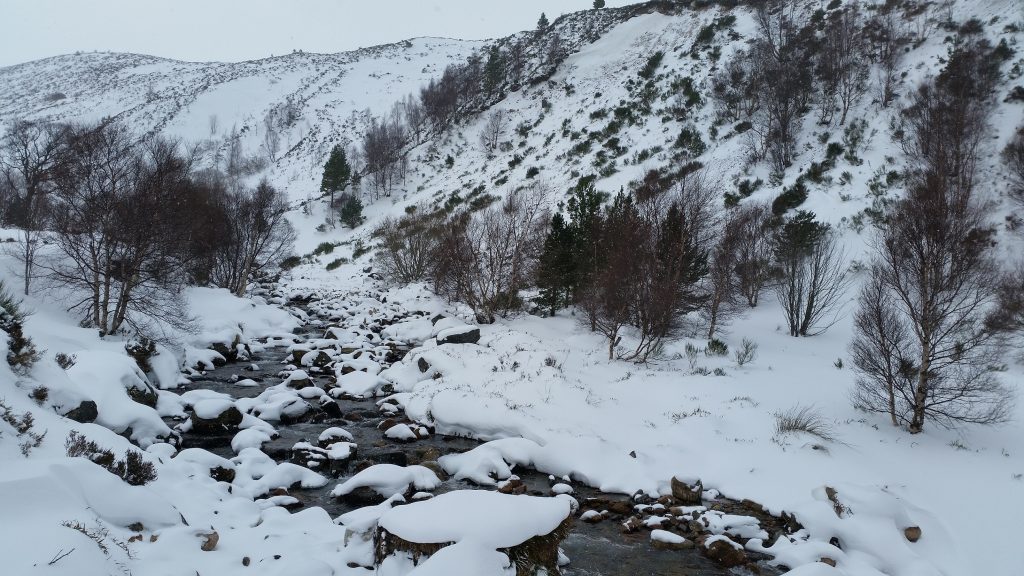
While on my days volunteering I learned that this species of deer are extremely well adapted to the Sub-Arctic environment we have here in the Cairngorm Mountains, it is perfect Reindeer habitat with an abundance of their favourite foods. So despite being cold and tired from hiking in the snow in the strong winds, I learned that, unlike myself, Reindeer are comfortable in temperatures of down to minus 30 degrees Celsius, and that the lowest temperature they have been known to survive in is minus 72 degrees C.
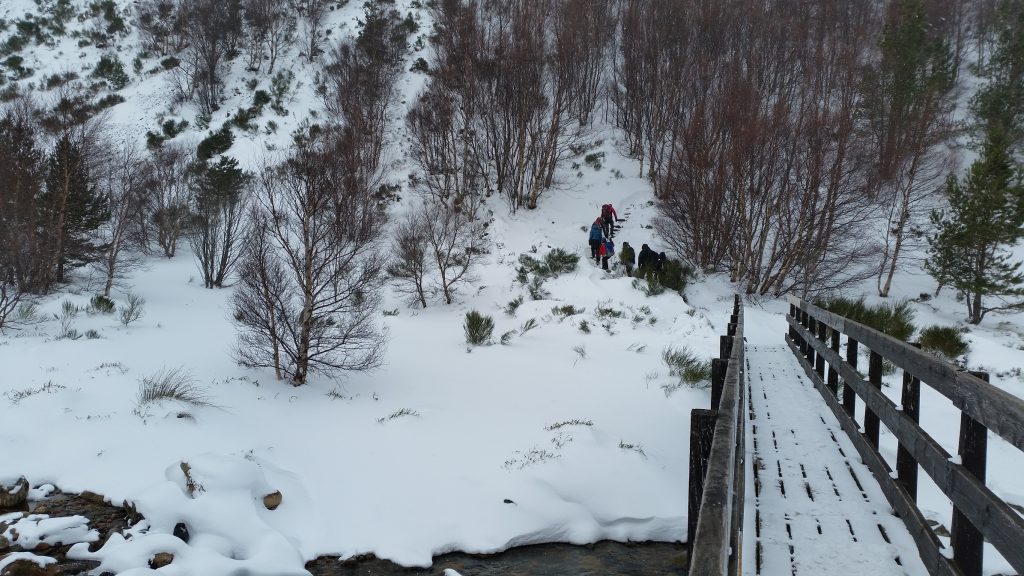
In the afternoons of my volunteer days I was able to go along on some of the Hill Trips. At most times of the year, a couple of times a day, one or two of the Reindeer Herders will guide a visit up onto the mountains to share their knowledge about the history of the herd, interesting facts about these incredible animals and, the bit that people seem to love the most, hand-feeding these mostly gentle animals. Like most mammals Reindeer have their own characters and personalities, which when it comes to feeding, usually draws out certain characteristics like bolshiness, being greedy or quite cheeky! All of our Reindeer have names, so I was able to get some guidance on how to learn them, not only by getting to know their features but also by their lovely and quirky characters.
Photo – Bumble and the Herd in a windblown enclosure
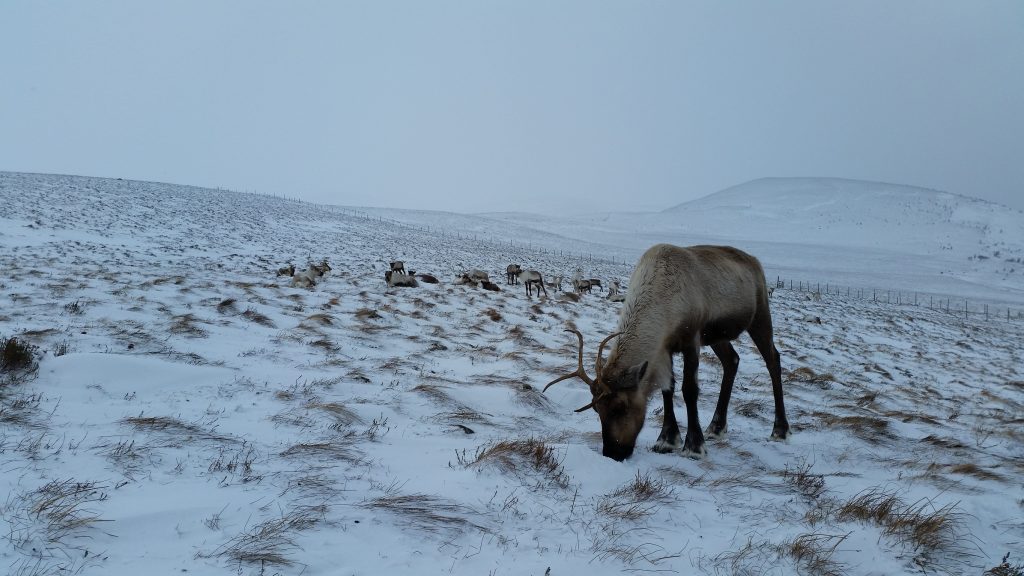
At the end of my winter volunteering I was honoured to be offered a job working as a part time Reindeer Herder at the Centre starting in April 2018.
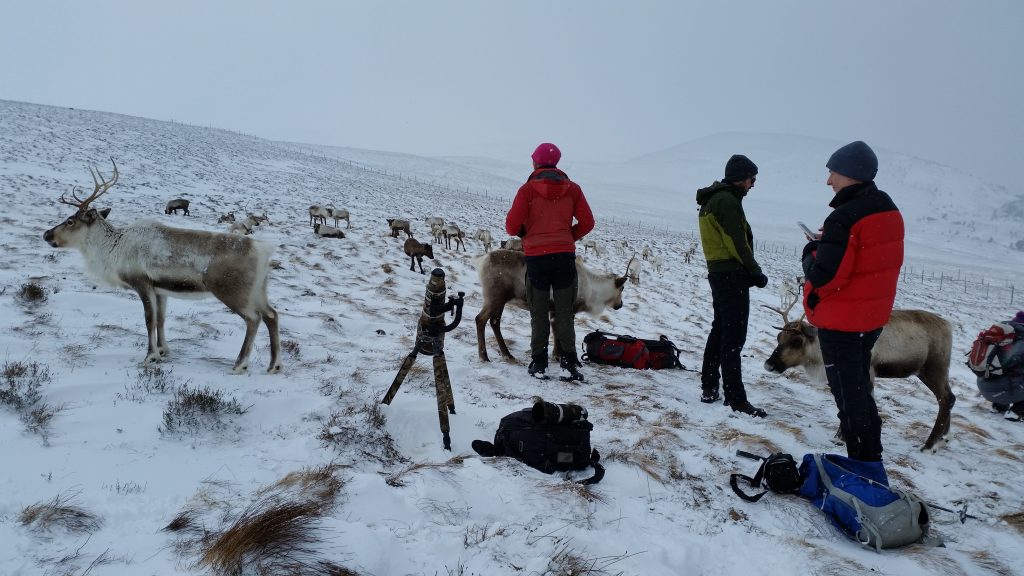
Nicky








